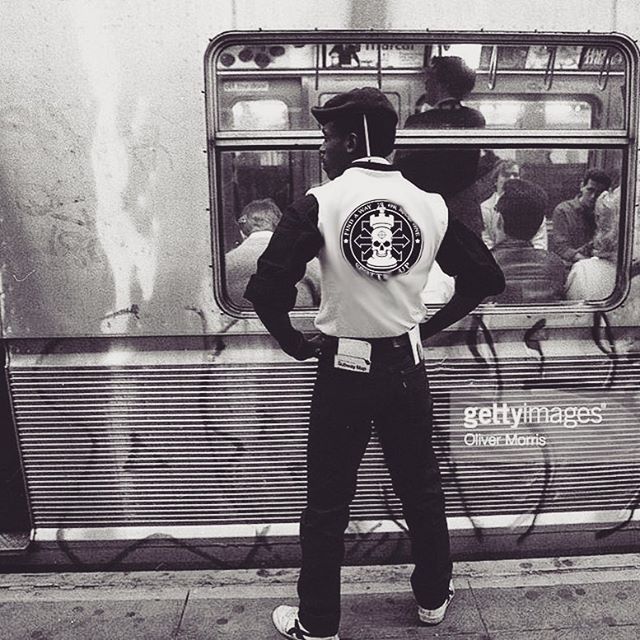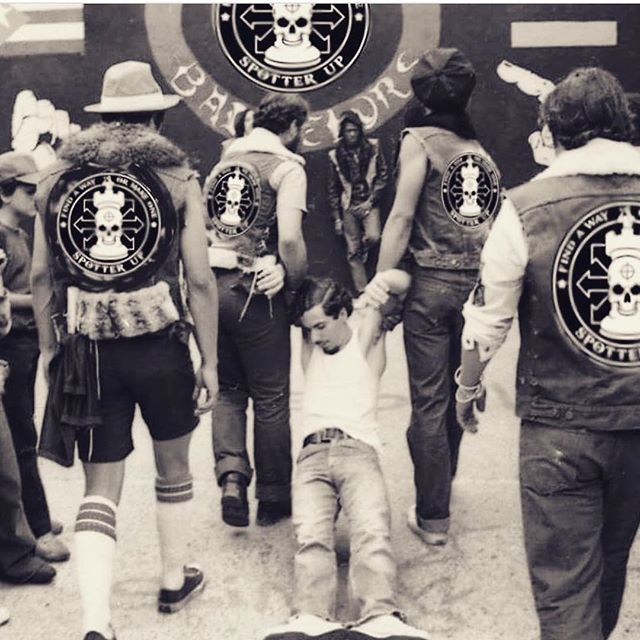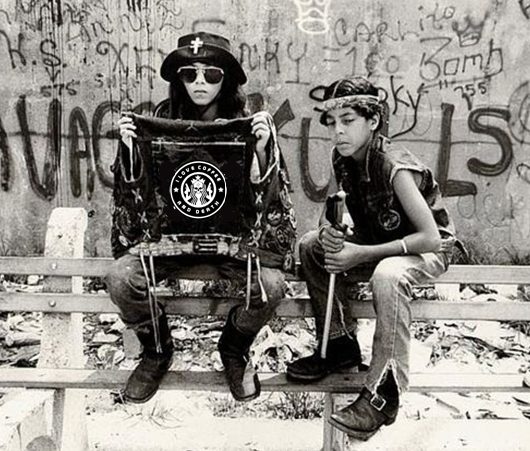Teen gang activity continues to grow in cities across the United States. Stopping teen recruitment into gangs requires cities to enact local community based initiatives such as job opportunities for them to become productive members of their communities and for more specific sentencing laws to be enacted through public policy.
There have been many responses to the gang problem in the United States, many in the form of legal measures taken, in order to handle the growing problem of teen recruitment into gangs and the problems they place onto communities as burdens to growth.
The issue now for communities is the problem of gangs has moved from large cities to all aspects of communities regardless of their size. Many small towns and rural areas are experiencing gang problems for the first time. Communities, whether urban, suburban or rural are all affected. Gang migration continues throughout the country and affects people regardless of their level of wealth or social status in society.
Until recently, the burden of dealing with gangs has been put upon the individual states, their municipalities and with only minimal assistance from the federal government but this is changing. Many legal decisions in the last decade changed how gangs are defined and this changes how the law sees teens who are involved with gangs, even if they are a fringe member or a ‘wannabe’ member. The federal government wants to reduce gangs by blanketing crime with a no-nonsense approach to gang activity.
There are various points of view in play when it comes to finding solutions and many differences in how best to solve the problem. The writer is of the view that stopping teen recruitment into gangs requires cities to enact local community based initiatives balanced with tougher sentencing laws to be enacted through public policy.
Firstly, the Tenth Amendment, which is part of the Bill of Rights, was ratified on December 15, 1792. In this amendment, the powers of the government were not delegated to the United States by the Constitution, rather, they are reserved to the States respectively, to the people. In this regard, the United Sates gains its strength from the individual states and the various contributions of its citizens, However, because of this amendment, the states’ rights amendment puts the responsibility for preventing, intervening, investigating, prosecuting and punishing gangs solely on the state itself. States therefor bear the responsibility differently and classify gangs differently. These classifications systems can create problems in the way of guilt by association for teens if they fraternize with gang members, but are not members of a gang or are not committing crimes with the members.
Many children are at the cusp of criminality, nearly falling on one side of the spectrum or on the other. In many case ‘wannabes’ and those whom affiliate with gangs and defined as gang members. Communities who want to rescue teens may find they are too late if the juvenile justice system becomes heavily involved. There is a need for accurate identification of what constitutes a member of a gang, a need for law enforcement not to overreact and misidentify and for cities to create locally based initiatives to handle those who are not members. The author of Criminology & Public Policy, J. Barrows is not in disagreement that a problem exists with gangs however he believes the issue comes in the form of defining what constitutes a gang. Policy should be more clear on what defines what a gang member is lest a teen get ‘lumped-in’ with more serious lifetime offenders; once the teen is in the juvenile justice system he is at risk and will have difficulty getting out. With a federal policy instituted, states have less levity when it comes to sentencing teens in the juvenile justice programs, and states should be allowed to set policy.
The Gang Abatement and Prevention Act of 2007 and 2009, introduced by Senator Diane Feinstein, sought to increase and enhance the federal law enforcement resources committed to investigating and prosecuting gangs. These bills did not pass, however it is telling of the times, and Congress seems to be moving in the direction of tougher restrictions on gangs. Congress is seeking a national initiative to protect law-abiding citizens and communities from violent criminals and expand the federal gang prevention programs. Seeking to federalize the law in combating gang violence sounds plausible, however the writer M.J. Cannata seems to believe differently, that successful local community based initiatives are the direction to go with resources and time and that legislative efforts are failing to combat gang violence.
The Gang Deterrence and Community Protection Act of 2005 was created with the intent of decreasing gang activity by increasing sentencing and making it easier to try juvenile offenders as adults. These term has been expanded to mean that “a formal or informal group or association of 3 or more individuals, who commit 2 or more gang crimes.” and calling them a criminal street gang. Therefore any federal criminal or state crime is punishable by imprisonment in the following categories: “a crime of violence; a crime involving obstruction of justice; a crime occurring under the Controlled Substances Act; or, a number of other crimes enumerated in the Bill 83”. The writer, Kidder believes like Barrows the language is extremely problematic, however he wants it not as clearly defined because this allows states to have leeway in sentencing and affiliating teens into gangs when they may not be involved in the first place. He believes crimes that historically have nothing to do with gang violence are crimes teens may participate in, such as money laundering and identification fraud, would be eligible for serious penalties such as life imprisonment. He believes the goal of this legislation is to weaken the definition of gangs. Weakening the definition of gangs can take loosely based affiliations of teens and imply all are criminals of a serious nature. (Kidder, p 641 pg). The National Gang Center lists on its’ website a list of enhanced penalties in sentencing for among the fifty states. Many classes of misdemeanors can be moved into the felony classification, based off certain circumstances, however this changes the outcome for many first time offenders who happen to be teens.
Diffusion of responsibility seems in contrast to the concept of group successes fostering their identification. Groups will accomplish instrumental tasks and satisfy one another’s socioemotional needs, however no member of a gang wants to bear personal responsibility when he cannot be judged on his own individual effort. There is a paradox that seems to occur here because teens join gangs as it allows them to accomplish something they cannot do alone, yet at the same time they emotionally seem to want to stand out as rebels singularly in society. Groupthink is another issue concept that plagues members of groups or gangs. Their overall mental efficiency, moral judgment is limited because teens want to reach a consensus and peer-pressure plays into this greatly, even with a leader in control. The adage, “good company destroys bad habits, bad company destroys good habits” seems applicable here. The leader is another concept that adversely or positively affect a teen who is lacking in role models. Leaders exert influence and provide direction to a group. Good leaders in the form of community activists, law enforcement officers and strong parents may be the person a teen needs to guide him out of the gang ranks, yet a strong gang leader may keep him entrenched in a negative and exploitative way of thinking.
Firstly, law enforcement agencies can only perform their duties as the public policy determines it can. Certainly the public wants to see crimes solved, and the police may be quick to react in neighborhoods to identify someone as responsible for a crime but this can cause further alienation in teens who bear no responsibility for a crime. Secondly, law enforcement works at the smallest level, while federal rules are meant to function at the broader level. Officers build relations with neighborhoods and rely on tips from witnesses. The broad policy forces the police to treat nearly all persons the same and when it begins to affect families, officers have fewer resources to use in the form of information. The justice system is of two-minds. One is that it must work with criminals for rehabilitation and the second is that criminals only deserve jail time. Policy must be very specific or there is no conclusion on how to handle a matter. Thirdly, because law enforcement is now utilizing limited resources to handle more minor crimes such as credit card theft-identity fraud because it is gang related rather than dealing with more serious issues such as kidnapping and murder.
I agree with the peer writers Cannata, Barrows and Kidder to some degree. I agree that a broad classification system can ‘sweep’ individuals into the juvenile justice system who should not be in it. I agree with Cannata that local community programs are useful to reducing gang activity. I also feel that some crimes should not be linked with more serious violent crimes such as those involving the murder of persons or causing the death of persons.
I think each of the writers falls into the same mistake that many can make; the fallacy of causation. They believe the root cause or root solution is one thing when it can likely be two or three or more. A complex issue is reduced into over simplification as whether hard sentencing versus community jobs is better; I believe they can work in conjunction. I also disagree with two of the writers on a classification system. I believe as they do that it shouldn’t be so broad as to include many non-gang affiliates, however it needs to be more tightly defined and include those who are truly involved in criminal activity and have a case history, thereby eliminating first time offenders and targets recidivists as the focus of law enforcement scrutiny. The writers want a very loose system, and I understand the reduction of individual rights and liberty is a by-product of policy, but some policy must be enacted.
Gangs are combated early on by a combination of enforcement, prevention and intervention. No one thing can solely reduce it. Coordinated efforts by city departments, schools, and social services agencies must focus on the at risk youth who are susceptible to recruitment. Parents must be involved as well and must be present in the life of the child. Connections between neighborhood groups, city hall and police agencies reduce the problems. Economic investments in the way of businesses, neighborhood clean-up, enforced code-violations and a sensible sentencing systems are ways to address the issue to improve the issue. Social services can offer job referrals and educational and social services to those who need them.
Police departments and criminal justice have gang reduction programs in places all over the United States. There must be a gang reduction policy with a focused deterrence such as on violent groups, proactive policing of gang-factions, and a task force that deals solely with gangs and has a gang mission,.
No single action will reduce the gang problem in the United States but a combination of programs just might do it. Again, teens get into gangs for social, economic and cultural reasons. Ending this activity requires cities to enact local community based initiatives such as job opportunities for them to become productive members of their communities and for more specific sentencing laws to be enacted through public policy. The Los Angeles Police Department has five reasons for teen involvement in gangs. They want recognition and status they don’t receive outside of the culture, they gain protection from attacks in their neighborhood, the gain a fellowship because they do not have one at home, and they want to benefit financially from criminal activity
The way to attack these issues then is to reverse engineer the outlets they have for expressing their desires and find positive alternatives to their choices. Safer neighborhoods with working street lights and mandatory curfews provide protection. Jobs and mentoring programs affirm the child’s sense of worth and provides some economic mobility and enhance status. The National Boys and Girls Club of America and G.R.E.A.T. provide life skills and is designed to reinforce the idea that gang avoidance is an effective choice for future development. Lastly, policy must be tough on recidivists and serious criminals, and gang leaders because they have the most influence on teens recruitment. The message must be specific enough to let people know that violence and social deterioration is unacceptable. Law enforcement and the justice system must have a goal, must understand the mission clearly, and must have the resources at hand, otherwise time and energy is diffused and the pressing concern of dealing with the gang problem will not be handled effectively. Only time will tell whether the initiatives public policy has enacted will be effective.
Many children living in low-income neighborhoods are susceptible to the lure of gang life. They think there is nothing better to do. Is the military a good alternative for at-risk youth looking to leave gang life? Stay tuned for Part 2.
[jetpack_subscription_form]
References
Barrows, J., & Huff, C. (2009). Gangs and public policy. Criminology & Public Policy, 8(4), 675-703. doi:10.1111/j.1745-9133.2009.00585.x
Bureau of Justice. National Gangland Center. Aug 24th, 2013. Retrieved from http://www.nationalgangcenter.gov/Legislation/Enhanced-Penalties-Sentencing
Cannata. M. J. (2009). Achieving Peace in the Streets: How Legislative Efforts Fail in Combating Gang Violence in Comparison to Successful Local Community-Based Initiatives. New England Journal On Criminal & Civil Confinement, 35(1), 243-276.
Kidder, J. A. (2007). Gang Deterrence and the Community Protection Act of 2005: Why the Federal Response to MS-13 Is Flawed and How it Will Have an Adverse Impact on Your State. New England Journal On Criminal & Civil Confinement, 33(2), 639-663
Franzoi, Stephen, L. (2009). Social Psychology custom edition (5th ed.). New York, NY: McGraw-hill.
Los Angeles Police Department. Why People Join Gangs. Aug 22, 2013. Retrieved from http://www.lapdonline.org/top_ten_most_wanted_gang_members/content_basic_view/23473
Office Juvenile Justice and Delinquency Protection. Comprehensive Gang Initiative. Aug 22, 2013. Retrieved from http://www.ojjdp.gov/programs/antigang/index.html





